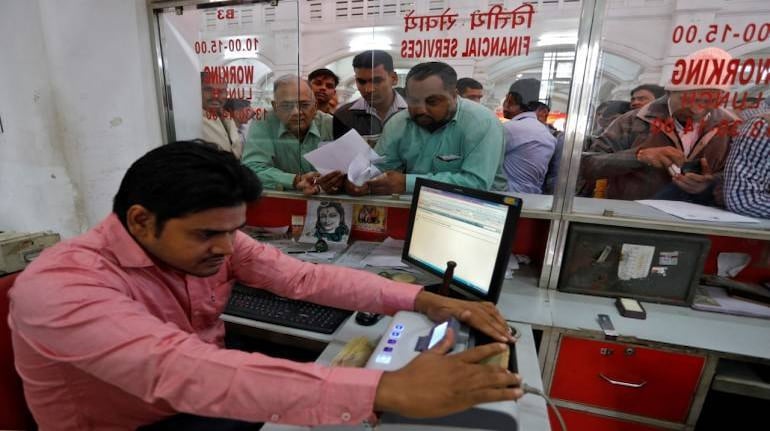



Payments banks, a new class of institutions aimed at deepening financial inclusion, are set to redefine banking business models in India.
They are sewing up a thread of unorthodox revenue streams including data monetisation, cross-selling of financial products, forming credit access platforms and creating alternate merchant payment models to get around the constraint of not being able to lend.
These pre-dominantly digital companies can accept deposits of up to Rs 100,000 per customer, but cannot give loans. This rule makes them ineligible to earn money from interest rates, the primary income source for conventional banks.
Airtel Payments Bank, Paytm and India Posts Payments Bank have already launched operations. Finotech, Vodafone and Reliance are expected to launch their payments banks soon.
“A lot is happening from the technology, regulatory and legislation perspective,” said Rishi Gupta, managing director and chief executive officer, Fino Payments Bank.
Of every Rs 100 of deposits collected, payment banks will have to invest at least Rs 75 (75 percent) in approved government securities, and may choose to park the remaining Rs 25 (25 percent) in current and fixed deposits of conventional commercial banks.
Government bonds and bank fixed deposits are currently fetching annual returns of about 7 percent, limiting the payments banks’ ability to widen their margins and offer attractive interest earnings to customers to save money with them.
According to experts, payments banks are likely to offer micro-savings options, given that most of their customers will have a propensity to make small, infrequent savings. This could mean customers could be allowed to maintain FD accounts with amounts of as low as Rs 100.
“While savings is core to banking, very few banks have taken an approach toward encouraging micro-savings, i.e. making acceptable savings amount to near zero,” said a recent report entitled 'Alternate revenue models for Payments Banks in India' by EY, an audit and consulting firm.
“Payments Banks need to focus on developing products that significantly reduce the minimum denomination that needs to be accumulated to be put into a savings product,” the EY report said.
These companies are also likely to offer a suite of products by cross-selling services such as insurance and mutual funds through strategic alliances with non-banking financial companies (NBFCs), asset management companies (AMCs) and even conventional large banks.
“Payments bank cannot lend on their own, but can offer credit products on behalf of partner banks,” said Gupta. “We are following a two-pronged approach, (earning through) transaction fees on the banking activity that the customer does and (through) cross-selling charges”.
Cross-selling charges are fees that a bank can earn, as commission, by partnering with other financial institutions and providing services such as insurance and loans.
Vivek Bekgavi, partner-fintech leader, PricewaterhouseCoopers (PwC), an audit and consulting firm, said that said that tie-ups with other banks, non-banking financial companies (NBFCs), mutual funds and insurance companies could be the “main source of income” for payments banks.
Payments banks can also develop alternate merchant payment models with low transaction costs for merchants and customers.
“The idea with payments bank is that they can make money from the merchants’ side,” Bekgavi said.
While some banks have decided to charge a fee from customers on cash withdrawals from bank branch, others will charge Automated Teller Machine (ATM) cash withdrawals above a certain limit.
“Payments Banks can make customer transactions, including merchant acceptance, free as long as they are within the bank’s ecosystem. This will incentivise merchants to accept cashless payments, reduce the acquiring costs and positively impact the overall system. However, to prevent cash-outs, free withdrawals can be limited,” the EY report said.
Data monetisation can turn out to be another major revenue source for these banks in the years to come.
After it reaches a critical mass, analysing data along with additional customer profile parameters can lead to valuable insights about spend patterns and preferences. These insights can enable payments banks to explore new revenue opportunities, EY said in its report.
These banks will generate a high volume of consumer transactions-led data, which will include transactions such as mobile recharges, utility bill payments, e-commerce spends and offline merchant transactions.
A significant value can be unlocked if this data is analysed and consumer insights are be monetised, which can help in very precise targeted marketing without compromising on data privacy.
“Payments bank need to have a very strong system of data analytics,” Bekgavi said.
While many experts believe that payments banks will take about five years, on an average, to break even, Gupta was confident that Fino Payments Bank will turn profits after the third year.
“We expect to break even in three years’ time,” said Gupta.
Discover the latest Business News, Sensex, and Nifty updates. Obtain Personal Finance insights, tax queries, and expert opinions on Moneycontrol or download the Moneycontrol App to stay updated!